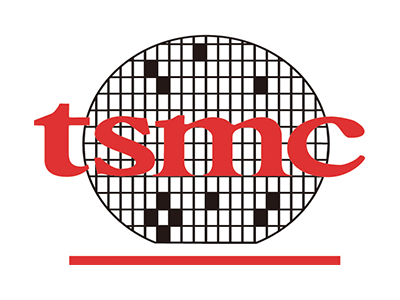台积电 (TSM.US) 2025年第三季度业绩电话会
文章语言:
简
繁
EN
Share
Minutes
原文
会议摘要
A company discusses capacity planning, AI infrastructure growth, and competitive strategies, emphasizing customer engagement, advanced packaging, and system performance. Financial highlights include strong demand for leading-edge technologies, revenue growth from smartphone and HPC platforms, and disciplined capacity expansion to meet AI market needs.
会议速览
TSMC reported Q3 2025 revenue growth, strong demand for leading-edge tech, and guided Q4 revenue with gross and operating margin expectations.
The dialogue discusses TSMC's Q3 2025 gross margin increase due to cost improvements and capacity utilization, exceeding previous guidance. It also forecasts Q4 2025 gross margin growth, impacted by overseas fabs and exchange rates. Long-term, TSMC expects gross margin dilution from overseas fabs to widen, aiming to leverage scale and operational efficiencies to maintain competitive advantages.
TSMC narrows 2025 capex range to 40-42 billion USD, with 70% for advanced process tech, 10-20% each for specialty tech, and advanced packaging. Invests for future growth, commits to profitable growth and increasing cash dividends.
The dialogue outlines a positive revenue outlook for 2025, driven by strong demand for leading edge process technologies, especially in AI-related sectors. It highlights cautious optimism for the non-AI market segments, with a forecasted mid-30s% year-over-year revenue increase. Despite current customer stability, potential impacts from terrorism policies and consumer sensitivity are noted, prompting prudent planning for 2026 while continuing to invest in future trends.
TSMC emphasizes leveraging AI to boost productivity, supports strong customer demand for semiconductor capacity, and employs a disciplined capacity planning system involving close customer engagement and multi-functional assessment to meet long-term market needs, ensuring profitable growth for shareholders.
TSMC accelerates capacity expansion in Arizona for AI and HPC, secures land for future growth, and advances technology upgrades. Volume production begins in Japan, construction starts in Germany, and investments continue in Taiwan, ensuring global leadership in logic IC manufacturing.
Discusses advancements in N2P and A16 technologies, highlighting their role in enhancing energy-efficient computing for smartphones and HPC AI applications, with volume production slated for 2026.
Prepared statements concluded; participants reminded to limit questions to two, use keypad for speaking and exiting queue, and allowance for Chinese questions with English translation provided.
The dialogue discusses the robust growth in data center AI and its potential to surpass initial mid-40s CAGR guidance by 2029. It also addresses the discrepancy between TSMC's revenue growth and CapEx, questioning if future investments will significantly increase to support technological advancements and capacity expansion.
AI accelerator demand is stronger than before, with a growth rate exceeding mid-40s CAGR. CapEx spending aligns with future business opportunities, aiming for revenue growth to outpace CapEx, a trend expected to continue. While CapEx is unlikely to drop significantly, it's also not expected to grow substantially given current capacity demands.
Discussed plans for increasing co capacity to meet AI demand, aiming for 30% AI revenue contribution by 2025, with efforts focused on narrowing the supply-demand gap.
A major customer highlights the shift from traditional semiconductor advancements to system-level innovations, emphasizing performance over mere technology. Despite concerns about Moore's Law, there's robust demand for advanced nodes, requiring close collaboration with technology providers to meet evolving requirements.
The dialogue discusses the impact of US-China trade tensions on AI GPU demand in China, with TSMC expressing confidence in its customers' performance and the potential for AI market growth despite export restrictions.
Discussion on the projected gross margin trends for 2026, including directional inputs and impacts, with specific focus on the dilution effect from 2nm RA.
The discussion covers N2 and N3 node impacts on gross margins, overseas fabs dilution, and foreign exchange rate effects, predicting 2-3% dilution and a 40-50 basis point change per dollar movement against NT.
Discussed challenges in forecasting capacity needs due to AI's unpredictable growth, emphasizing customer engagement for better insights and strategic planning.
A detailed discussion on the anticipated growth in AI infrastructure, with a focus on TSMC's forecast for AI-related revenue, token growth, and potential outperformance of industry standards, considering the increasing value from AI investments and CapEx growth among major cloud service providers.
Discusses the disparity between exponential token growth and AI revenue forecasts, emphasizing TSMC's role in technology advancement to enhance efficiency and meet increasing demand, suggesting that continuous improvement in technology and customer collaboration can address the widening gap.
TSMC is planning to build two advanced packaging fabs in Arizona to meet strong demand, working closely with a major partner whose construction is already underway. The collaboration aims to support customers and strengthen presence in the US market.
Discusses growth drivers for 2020-2026, emphasizing technology migration (N2, N3), ASP increase, and volume expansion, with plans to optimize M5, N3 capacity, and expand N2 technology to meet strong demand.
The dialogue discusses TSMC's revenue opportunities tied to AI data center capacity growth, clarifying that revenue and margin impacts are consistent regardless of whether demand comes from GPUs or ASICs. It also highlights TSMC's strategic initiatives to strengthen its competitive position in the foundry market, emphasizing collaboration with customers and leveraging leading-edge technologies to meet future AI demand.
Focuses on TSMC's strategic initiatives to enhance competitive advantage amidst US competition, emphasizing strengthening competitive edge in Foundry 2.0 landscape.
A speaker emphasizes the significance of system performance and advanced packaging, noting their growing revenue contribution and importance to customers. They introduce a new business approach focusing on the entire system, not just individual components. Collaboration with a competitor, who is also a valued customer, is mentioned, but no further details are provided.
The dialogue reassures that there's no concern regarding pre-builds for smartphones due to current inventory levels being at a seasonal and healthy state, alleviating worries about potential overstocking.
Announcement concludes the QA session, advising on access to the conference replay and transcript, with a call for continued health and future engagement.
要点回答
Q:What was the sequential increase in TSMC's third quarter revenue?
A:TSMC's third quarter revenue increased 6% sequentially in NT and 10.1% in US dollars.
Q:What percentage of wafer revenue in the third quarter was contributed by 3nm, 5nm, and 7nm process technologies?
A:3nm process technology contributed 20 to 23%, while 5nm and 7nm accounted for 37% and 14% respectively. Advanced technologies defined as 7nm and below accounted for 74% of wafer revenue.
Q:How did the balance sheet position change for TSMC at the end of the third quarter?
A:TSMC ended the third quarter with cash and marketable securities of 2.8 trillion NT, and on the liability side, current liabilities decreased by 101 billion NT. Financial ratios showed an increase in accounts receivable turnover days to 25 days and a decrease in days of inventory to 74 days due to strong shipment in N3 and N5.
Q:What was the change in cash flow and CapEx during the third quarter for TSMC?
A:TSMC generated about 427 billion NT in cash from operations, spent 287 billion in CapEx, and distributed 117 billion for cash dividends. The cash balance increased 106 billion NT to 2.5 trillion at the end of the quarter.
Q:What is the guidance for the fourth quarter in terms of revenue, gross margin, and operating margin?
A:The fourth quarter revenue is expected to be between 32.2 and 33.4 billion US dollars, a 1% sequential decrease or a 22% year-over-year increase at the midpoint. Gross margin is expected to be between 59% and 61%, and operating margin between 49% and 51%.
Q:How did the third quarter gross margin increase and what factors offset it?
A:The third quarter gross margin increased by 90 basis points sequentially to 59.5%, due to cost improvement efforts and a higher capacity utilization rate, but it was partially offset by margin dilution from overseas fabs and an unfavorable foreign exchange rate.
Q:What is the updated forecast for 2025 CapEx and how is it allocated?
A:The forecast for 2025 CapEx is narrowed to between 40 and 42 billion US dollars. Approximately 70% of the capital budget will be allocated for advanced process technologies, 10% to 20% for specialty technologies, and the remaining 10% to 20% for advanced packaging, testing, mask making, and other needs.
Q:What is the near-term demand outlook for TSMC?
A:TSMC's near-term demand outlook is supported by continuous strong demand for leading edge process technologies and robust AI-related demands throughout 2025. Non-AI markets are expected to show a mild recovery, and the full-year 2025 revenue is expected to increase by close to mid-30s% in US dollar terms.
Q:What are the potential impacts of terrorism policies on customer behavior and air market segment?
A:There are potential impacts of terrorism policies on consumer-related and price-sensitive air market segments due to uncertainties and risks which have not yet been observed in customer behavior.
Q:How is TSMC ensuring to meet the growing demand for semiconductors due to AI applications?
A:TSMC is investing in advanced technologies and capacity to support customer growth and address the structural increase in long-term market demand for semiconductors, driven by AI applications.
Q:What is TSMC's approach to capacity planning and engagement with customers?
A:TSMC's capacity planning process involves multiple teams across several functions, assessing market demand both top-down and bottom-up, and collaborating closely with customers.
Q:How is TSMC expanding its global manufacturing footprint and what is the significance of the expansion?
A:TSMC is expanding its global footprint through capacity expansion in Arizona, upgrades to more advanced process technologies, and establishing a new fabrication facility in Japan, a specialty fab in Dresden, Germany, and multiple phases of 2 nanometer technology in Taiwan.
Q:What is the status of TSMC's N2 and N2P development, and how is the technology expected to perform in 2026?
A:TSMC's N2 technology is well on track for volume production later this quarter, with a faster ramp in 2026 due to demand from smartphones and HPC AI applications. N2P is an extension of the N2 family, offering enhanced performance and benefits.
Q:What are the expectations for AI accelerator growth over the next few years?
A:The expectation is that AI accelerators will grow at a mid-40s CAGR from 2024 to 2029. This projection has been slightly updated to be a little better than previously anticipated.
Q:How is the relationship between CapEx and revenue growth expected to play out?
A:The company plans to continue investing in CapEx based on business opportunities. It is believed that as long as the company pursues the right strategies, revenue growth should outpace CapEx growth, a pattern observed in the past few years.
Q:What is the indication regarding the potential for higher growth correlated with higher CapEx?
A:A higher level of CapEx is expected to correlate with higher growth opportunities, and the company remains confident in continuing to invest in mega trends which are anticipated to drive future growth.
Q:How much AI capacity is TSMC planning to build next year, and what does this imply about AI demand?
A:TSMC is working hard to narrow the gap between demand and supply for AI capacity and is increasing capacity for AI accelerators in 2026. However, the actual number for capacity build-out in 2026 will likely be updated the following year.
Q:What is the percentage of TSMC's revenue that is expected to come from AI?
A:TSMC's revenue from AI is expected to be around 30% for the current year, marking a significant portion of the company's total revenue.
Q:How does TSMC reconcile its strong demand for leading edge chips and system level innovations with a customer who believes Moore's Law is dead?
A:TSMC acknowledges the need to focus on the entire system of performance rather than just the leading edge. TSMC works closely with customers to design technology that meets their requirements in front end, back end, and packaging, emphasizing the importance of the whole system of performers.
Q:What impact do export controls and restrictions have on TSMC's ability to enter the AI market in China?
A:There are concerns regarding the impact of both U.S. and Chinese government restrictions on TSMC's ability to enter the AI market in China. These restrictions could potentially affect TSMC's market opportunity and its long-term growth in the AI sector if it is not fully allowed to serve the Chinese market.
Q:What is the speaker's confidence regarding the growth of AI and customer performance despite the absence of the China market opportunity?
A:The speaker is confident that AI growth will be very dramatic and positive, supported by their customers' performance which they expect to continue growing.
Q:Is the speaker confident that a 40% growth margin or higher can be achieved without the China market opportunity?
A:Yes, the speaker is confident that even without the China market, a 40% growth margin or even higher could be achieved.
Q:What factors should be considered when predicting gross margin trends for 2026, particularly regarding 2nm RA?
A:Factors to consider include the dilution impact of new nodes (N2 and N3), overseas fabrication dilution, and the impact of foreign exchange rate movements. The dilution from new nodes is expected to affect gross margin negatively, but the dilution from N3 is expected to decrease and eventually catch up to the corporate average by 2026.
Q:How should the impact of 2nm dilution be understood in terms of quarters to reach the corporate average?
A:The impact of 2nm dilution is compared to the 7 to 8 quarters it took for 2nm to reach the corporate average, with the implication that it may still take a similar timeframe for the new nodes to reach the corporate profitability level.
Q:What has changed in the approach to capacity planning and expansion in the context of AI compared to other industries like smartphones and PCs?
A:In the context of AI, the approach to capacity planning and expansion has become more challenging due to the early stage of AI application and its difficulty to forecast demand. The company is paying attention to customer discussions and internal studies to predict growth, which differs from past practices with smartphones and PCs.
Q:What is TSMC's forecast for AI infrastructure growth and how does it compare to the industry growth forecast?
A:TSMC's forecast for AI infrastructure growth is aligned with the market's view that suggests a significant growth opportunity. However, the specific forecast and comparison to industry growth were not detailed in the provided text.
Q:What is the projected CAGR for AI demand including all the infrastructure and aligning with major customers' forecasts?
A:The projected CAGR for AI demand is in the mid-40s, which includes all the infrastructure and aligns with the forecast views of major customers.
Q:How does the speaker view the exponential growth of tokens and its implication for TSMC?
A:The speaker acknowledges that the number of tokens is increasing exponentially and believes this will continue every three years. This growth is a result of TSMC's technology advancements, allowing customers to handle more tokens for their fundamental calculations. Consequently, while TSMC's revenue growth may not match the token growth rate, the combined efforts of the technology migration and customer design changes will fulfill the potential and growth for token consumption.
Q:What is TSMC's strategy for capacity planning in relation to AI demand and advanced packaging in Arizona?
A:TSMC's strategy for capacity planning includes the expansion of advanced packaging in Arizona, where they plan to build two advanced packaging fabs. They are currently working with a major company and an established partner who is building five facilities in Arizona. This collaboration is aimed at supporting customers and meeting the strong demand for advanced packaging in the US.
Q:What is the anticipated impact of technology migration and volume growth on revenue for TSMC in the coming year?
A:TSMC anticipates that revenue growth in the coming year will be influenced by both technology migration and volume growth. The technology migration is expected to contribute to an increase in average selling price (ASP) and technology upgrades. Additionally, there is a potential for volume growth due to some mild silicon recovery. The exact drivers of growth are not clearly defined as being more driven by technology migration or volume growth alone, but rather a combination of both factors.
Q:How will TSMC manage capacity requirements to meet the strong demand for leading-edge technology?
A:To meet the strong demand for leading-edge technology, TSMC plans to optimize capacity for M5 and N3 nodes, expand capacity for N2 technology, and add new capacity as needed. This strategy is to ensure that the company can support customer requirements and the anticipated demand for leading-edge technology in the upcoming year.
Q:What are the implications of AI demand on TSMC's revenue and gross margin mix, considering it could come through a GPU or an ASIC?
A:TSMC does not have a preference between GPU or ASIC for the AI market and does not differentiate in terms of impact on revenue and gross margin. The company is working with customers to support their growth in the next several years using their leading-edge technologies, regardless of the specific product type.
Q:What strategic initiatives is TSMC undertaking to further strengthen its competitive advantage in the Foundry 2.0 market?
A:TSMC is focusing on strategic initiatives such as introducing advanced packaging solutions, with an advanced packaging revenue that is approaching 10% of total revenue. This reflects an emphasis on system performance and a response to customer needs, which is a shift from previously focusing only on the chip portion to now looking at the entire system, which is also important for customers.
Q:How does TSMC address the concern about pre-order build-up, especially in the context of the consumer electronics industry?
A:TSMC is not concerned about pre-order build-up as the inventory levels are already at very healthy seasonal levels. Consequently, there is no pullback from customers regarding pre-orders.






